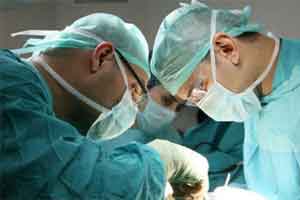Study shows hypothermia occurs during surgery in around half of patients
A study presented at this year’s Euroanaesthesia congress in Berlin shows that hypothermia occurs in around half of patients undergoing surgery, despite national guidelines for its prevention.  Perioperative hypothermia (PH), defined by temperature less than 36ºC, has a negative impact on both patient experience and post-operative outcomes. Despite national guidance on its prevention, PH remains a common problem. In this study, the authors aimed to determine the incidence of PH in patients undergoing elective surgery in two regional hospitals, and to investigate where in the process of surgery that the heat loss occurs.
Perioperative hypothermia (PH), defined by temperature less than 36ºC, has a negative impact on both patient experience and post-operative outcomes. Despite national guidance on its prevention, PH remains a common problem. In this study, the authors aimed to determine the incidence of PH in patients undergoing elective surgery in two regional hospitals, and to investigate where in the process of surgery that the heat loss occurs.
The first part of the audit project was designed to establish whether PH occurs and if it does what is the incidence (144 patients). The temperature of this group of patients was recorded in the recovery room following surgery. The second part of the project aimed to establish at what stage in the process of surgery the heat loss is most likely to occur (54 patients). The core temperature in this group of patients was recorded at a number of points, from the time patient left the ward to the time the patient was admitted to the recovery room immediately after surgery. Also recorded were the ambient theatre temperature, warming techniques used if any, and length of surgery (from induction to recovery).
The study found that the incidence of hypothermia (body temperature < 36°C) following surgery was 58% (83/144) and 50% (27/54) for the two groups of studied patients. Mean age of patients was 39 years, operating theatre ambient temperature 22°C and mean length of surgery was 75 min. Mean loss of body temperature from induction to recovery was a loss of 0.47ºC, ranging from a 0.8ºC gain to a 2.8ºC loss.
In patients where no active warming method was used, a significantly greater loss of temperature occurred (0.81ºC v 0.18ºC). Warming methods used included devices used for warming fluids administered intravenously, devices used for forced air warming via a specially designed blanket placed on the patient during surgery, and an increase in the operating theatre ambient temperature. The decision on whether to use these warming methods is clinical and based on the length and type of surgery and predicted fluid replacement requirements during surgery. Guidelines issued by the UK’s National Institute for Health and Care Excellence (NICE) relate to this decision making process.*
The authors say: “This study found that hypothermia during surgery is a common problem. Most of the heat loss happens from induction to recovery. Application of active warming measures is likely to significantly reduce the incidence in patients having elective surgery.”
They say that their findings are consistent with a number of other studies that have investigated this issue. It appears that during the first hour following induction of anaesthesia and surgical intervention, core temperature will fall by 1.0°C to 1.5° C, followed by a slower, linear decrease in core temperature during the next 2 to 3 hours. Development of hypothermia is multifactorial and includes environmental exposure during surgical site preparation and loss of behavioural responses to cold, alongside pharmacokinetic actions of anaesthetic drugs, reduced metabolism and altered autonomic control of vascular tone with resultant vasodilation and vasoconstriction.
The authors found that 44 out of 54 procedures (81%) last longer than 30 minutes, and even simple operations such as tonsillectomy were often found to last longer than 30 minutes. Furthermore, in 36 out of 54 procedures (67%), patients received more than 500ml fluid intravenously during their procedures. This suggests that most patients require active warming during their operations.
The authors conclude: “Our findings suggest that warming measures are not applied often enough. We believe that each patient should be evaluated individually, and provided with some or all of the warming measures based on clinical need and NICE guidelines.”

